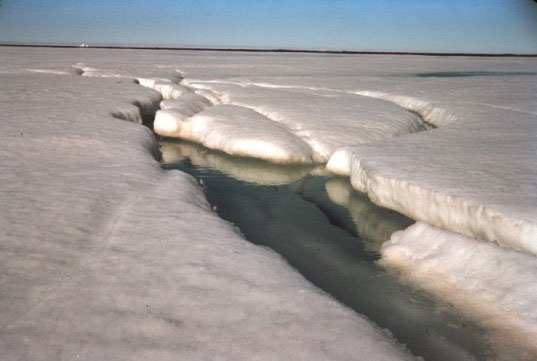The Arctic emits 62 billion tons of carbon in the 21st century
Recent research shows that the Arctic will move from a carbon-containing state to a carbon source when the permafrost will emit greenhouse gases.
The melting of these layers will lead to decomposition and carbon emissions into the atmosphere. An estimated 1,500 to 2,000 billion tons of carbon in the Arctic permafrost.

Researchers at the Lawrence Berkeley Laboratory in Berkeley, California and Canada have just published a new study that predicts carbon emissions. This study uses a mathematical model to predict that the Arctic will emit 62 billion tons of carbon in the 21st century, about 620 million tons a year, equivalent to 2.2 billion tons of CO2 per year.
According to the study, when the climate heats up, the increase in carbon in the atmosphere makes plants grow (especially in the tropics), which will provide materials for bacteria to decompose in flooded places, Wet, increasing methane emissions, is one of the greenhouse gases.
The global carbon project says people emit 8.4 billion tons of carbon, equivalent to 30.8 billion tons of CO2 in 2009.
It is worrisome that 9 billion tons of CO 2 globally each year is due to burning fossil fuels being absorbed by the earth and the ocean. When the Arctic is no longer storing carbon, the more carbon will emit into the ocean and the atmosphere.
- Global carbon emissions are about to reach 36 billion tons
- Use land to reduce greenhouse gas emissions
- Summary of UN special report on climate change: The Arctic as we know it is gone, believe your eyes
- Every second 14,000 tons of water flows into the sea because the Arctic ice melts
- Alien prediction will appear right in the 21st century
- One person produces two tons of CO2 each year from eating
- 'Attractive' predictions about the 21st century
- The 21st century super modern spy planes
- 21st century: Century of Nanotechnology
- For the first time in the world Russia explored the Arctic seabed
- Predicting the future 50 years later
- The Amazon River emits most of the carbon absorbed by the Amazon
 Is the magnetic North Pole shift dangerous to humanity?
Is the magnetic North Pole shift dangerous to humanity? Washington legalizes the recycling of human bodies into fertilizer
Washington legalizes the recycling of human bodies into fertilizer Lightning stone - the mysterious guest
Lightning stone - the mysterious guest Stunned by the mysterious sunset, strange appearance
Stunned by the mysterious sunset, strange appearance